Generative engine optimization (GEO) is the latest step in the evolution of online search that is drastically changing marketers' organic strategies. In this guide, I'll bring you up to speed with this process and explain how to build effective GEO strategies.
What you will learn
- What GEO is and why it matters
- How it differs from traditional SEO practices
- How to improve your visibility in generative AI search engines
What is generative engine optimization?
Generative engine optimization is a set of practices that aim to increase a website's visibility in AI-powered search engines (ChatGPT, Perplexity, Google's AI Mode, etc.). Its goal is to make content machine-readable, extractable, and credible enough to be referenced by large language models (LLMs) for a given user query.
While GEO strategies are still in their infancy, they mainly revolve around practices like:
- Aligning content with AI models' natural language processing (NLP) mechanisms for easier parsing
- Restructuring content to better match user queries and search intent
- Improving brand authority to signal credibility to AI engines
I'll discuss the specific GEO tactics you should implement a bit later in this guide. But first, let's see why you should do it in the first place.
Why is GEO important?
GEO is important because it can provide ongoing organic search traffic from major AI-driven platforms. It lets your website adapt to search trends and stay relevant as users increasingly adopt AI in their everyday search behavior.
In the past year or so, we've seen a massive shift from traditional search engines to AI-powered chatbots.
A study by Higher Visibility showed that 71.5% of people use AI for search activities, which means that a large chunk of your audience isn't relying on Google as much.
Statista's data further solidifies the importance of jumping on board with GEO as quickly as possible. It predicts that the number of U.S. users relying on AI as their primary search tool will reach 36 million by 2028, compared to 15 million in 2024.
These numbers aren't just vanity metrics—changes in search behavior are directly impacting websites' revenues. In 2024, Influencer Marketing Hub reported a 525% jump in revenue generated from AI-driven search engines between January and August.
The trend here is clear: Google's blue links are losing importance as drivers of organic traffic. The sooner you adapt your search strategy accordingly, the higher the chances of your pages being featured in AI citations.
How does GEO differ from SEO?
The main difference between GEO and traditional search engine optimization (SEO) lies in the focus. While SEO aims to get pages to the top of Google's search engine results pages (SERPs), GEO focuses on positioning them in the citation fields of different AI engines.
As such, it either expands or completely replaces some of the SEO tactics we've typically used to drive organic traffic. For example:
- Query matching is replacing keyword targeting
- Content granularity and conciseness are trumping the importance of length
- Contextual relevance is becoming more important than semantic
The good news is that if you've been up-to-date with SEO best practices, you likely won't need to overhaul your strategy because many of these changes have been introduced gradually.
For example, we started prioritizing concise answers to questions back when Google introduced featured snippets, which have evolved into AI Overviews (AIOs) and recently AI Mode.
All of these features (alongside other AI engines) share a common thread of preferring direct answers, so that's one aspect of optimization you don't need to worry about if you've been updating content to follow search engine guidelines.
Still, you'll probably have to tweak your pages here and there to make your content GEO-friendly, even if you've followed the necessary SEO practices. AI engines work much differently from traditional search algorithms, so you should align your content with their preferences.
10 tips for an effective GEO strategy
To maximize your chances of showing up in AI-driven search engines, follow these tips:
1. Answer contextually-rich queries
To rank in generative AI platforms, you need to move away from keyword matching and start targeting long-tail queries filled with specific information.
This is because fewer users are searching for phrases these days—instead, they're asking questions or providing comprehensive instructions.
Simple queries are being enriched with plenty of contextual cues that help AI engines understand exactly what the user is looking for.
Your content must adapt accordingly by digging deeper into user intent and ensuring high contextual relevance to the query.
Let's analyze a typical query to explain what this means. I asked Perplexity, "What is the best laptop for graphic design students under $600?"
It cited several sources that address specific aspects of my query, specifically:
- Laptops for graphic design
- Those under $600
- Best cheap laptops (which is implied by my price range and the fact that the query includes "students")

Perplexity then cross-referenced all these sources to suggest laptop models that check as many boxes as possible from my query.

If I remove any part of the query, both the result and the sources will be different.
For example, simply removing the word "students" immediately changed the cited sources and several recommendations because the target audience changed.

This shows that if you want to rank in AI engines, you must know exactly who your audience is and what they need.
Generally speaking, there are fewer slots in AI citations than traditional search engines, so you must sharpen the content's focus to appear in your target audience's searches.
Doing so lets you hedge against the inevitable drop in clicks and gives you more qualified traffic with focused intent.
To achieve this, expand your target persona beyond basic data like demographics and preferences. Drill into their pain points and specific circumstances that can refine the query. So instead of writing about "10 things to do in NYC," split your content to address:
- Activities for specific age groups
- Different categories of activities (art, nature, music, etc.)
- Budget differences
The idea here is simple—the more ground you cover with intent-focused content, the higher the chances of appearing in the results for a specific aspect of the query.
2. Provide direct answers before elaborating
When addressing question-based queries, always start with a direct answer. Use 1-2 sentences to address the query head-on, and then move into any additional information the user can benefit from.
This rule has been around for a while, but it's more important than ever.
You could get away with convoluted content and still rank on page #1 of Google, but you most likely won't be able to do it for AI engines.
A perfect example is this article by Yale Insights, which ranked on the first page of SERPs when I Googled "what is shadow banning."
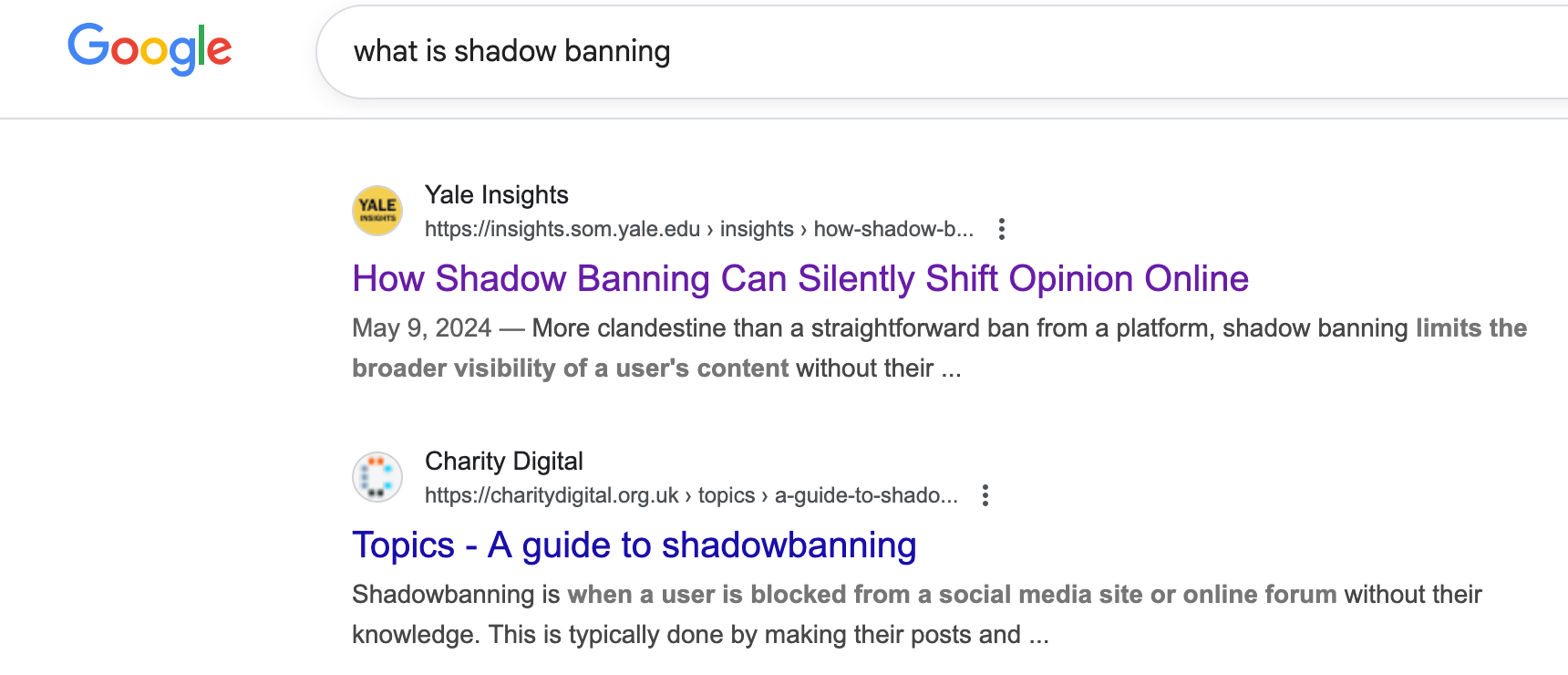
But as you can see in the image below, it didn't make it to Google's AI Mode for the same query, unlike some of its other first-page competitors like Single Grain's article.
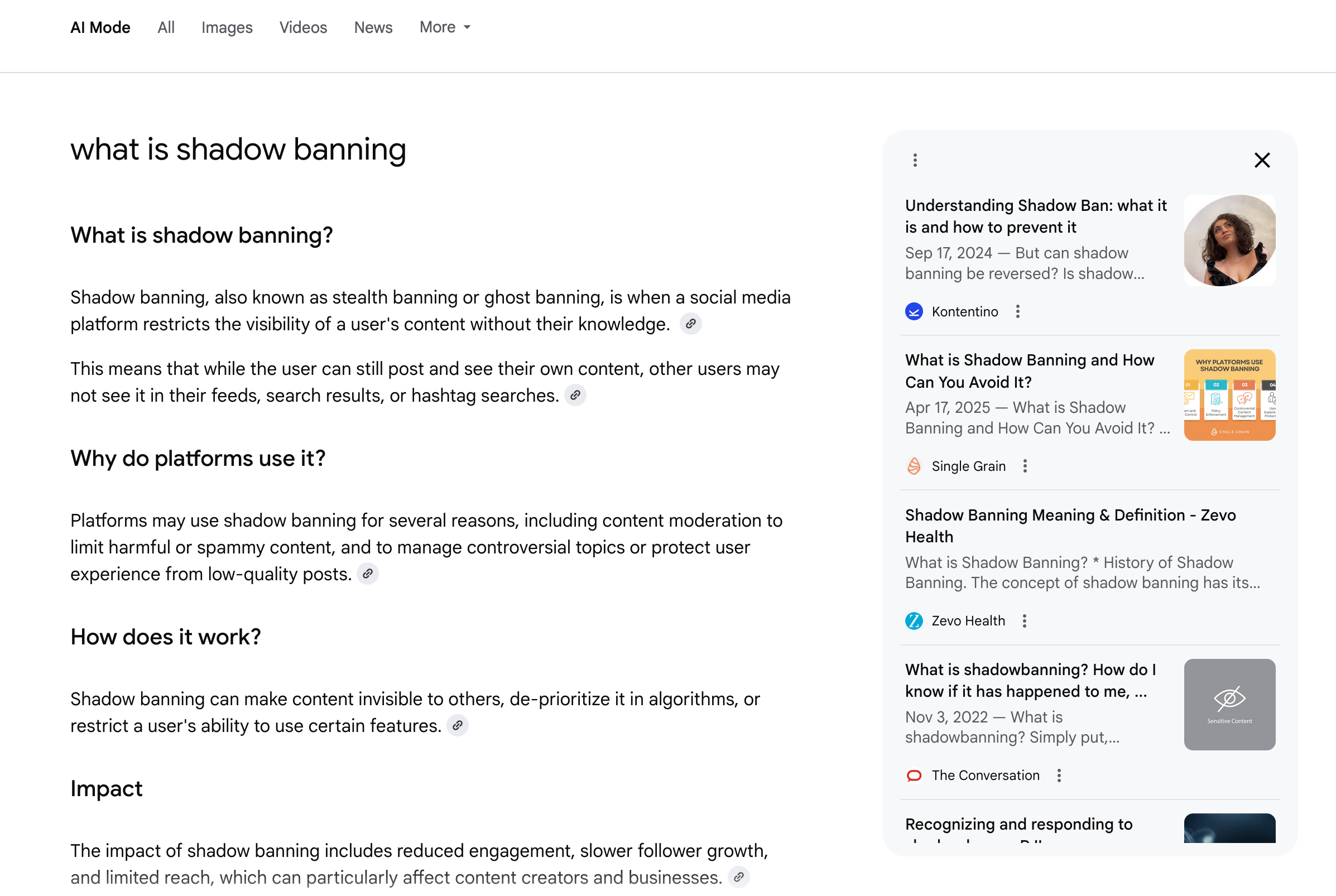
One of the main reasons for this is that Single Grain answered the question immediately, accurately, and concisely.

At the same time, Yale Insights started with a far less focused intro:
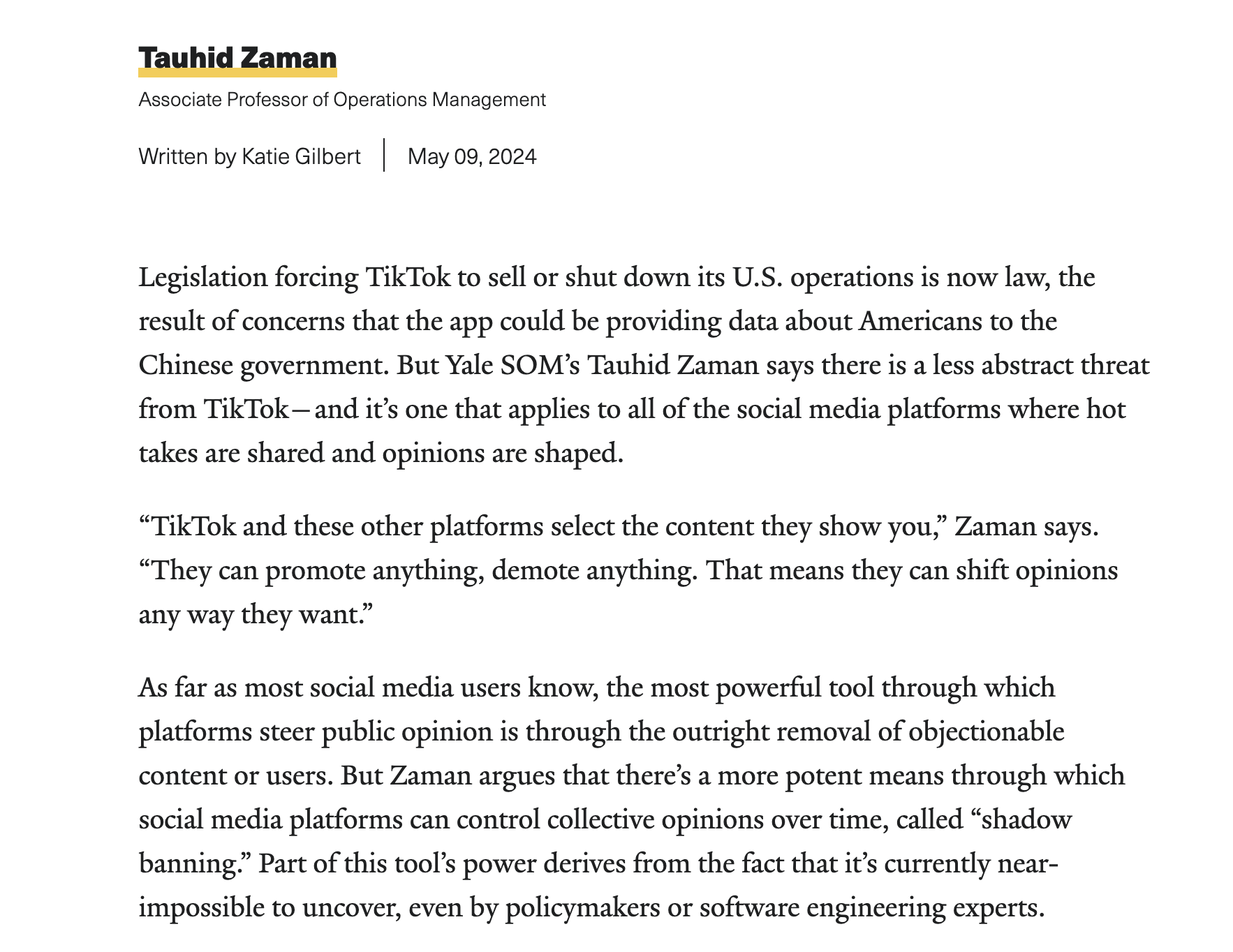
While Single Grain's article goes far beyond the query, it prioritized the answer before diving into anything else. Do the same for all question-based queries, and AI engines will find it easier to match your content to them.
3. Structure content for LLMs
Generative AI engines use advanced large language models (LLMs) to understand queries and match them to the most appropriate answers.
Well-structured content bridges the gap between these two processes, allowing LLMs to extract the key information effortlessly.
The best part is—the formatting guidelines to follow don't differ much from those that we use to improve content readability. The key rules to follow include:
- Using bullet points, lists, and tables to highlight key information concisely
- Creating a logical content hierarchy with headings (H1, H2, etc.)
- Using short, value-packed paragraphs
- Breaking up text with contextual visual and interactive elements (images, embeds, etc.)
You can do any or all of the above depending on your topic and intent, and doing it right can get you cited even if you don't directly match the query/keyword.
For example, when I asked ChatGPT about the benefits of a protein-rich diet for those with insulin resistance, it mostly quoted academic research—but it also included a commercial source discussing foods that stabilize blood sugar.

ChatGPT cited this article even though I didn't ask it about specific foods. Besides contextual relevance, the main reason for this is the page's structure.
It uses a clear listicle format with short paragraphs, as well as bullet points throughout the text—including one that highlights the importance of a high-protein diet for stabilizing sugar (which is how ChatGPT connected it to my query).

Structuring your content properly helps you speak the language of generative AI platforms, which prefer conciseness and clarity.
By ensuring it, you can boost your chances of getting picked up by an LLM.
4. Publish multimedia content
You should go beyond written text to optimize for multimodal signals in generative engines, especially for topics that can benefit from visuals.
Besides helping AI platforms understand your content more thoroughly, they might pull the actual visuals as part of the response.
For example, a query like "how to create a gallery wall" is better answered through visuals than text. When I asked Perplexity about it, the response immediately featured YouTube videos at the top.

With this kind of query, you may also explore images for inspiration. Perpexity gathers a bunch of images from the web similarly to how Google does, and it includes a link to the source page.

By creating and optimizing visual content, you can cast a wider net for AI engines.
Unlike traditional search engines that mainly focus on text, generative AI platforms collect data from plenty of formats and show the most appropriate ones for the query.
With this in mind, GEO encourages a multi-channel marketing approach. Post content in various formats across different platforms, and AI engines are more likely to stumble upon your pages.
5. Build brand authority
Your online reputation directly impacts the chances of being cited in AI responses. All major GenAI companies invest heavily in the credibility and accuracy of AI answers, so trustworthiness will remain one of the most important ranking factors.
I'm sure you've heard this advice before, as authority and credibility have been important ever since we moved away from practices like keyword stuffing.
Still, the value of being a reputable resource can't be overstated, especially since AI algorithms are getting increasingly capable at sentiment analysis that tells them how others perceive your brand.
For example, when you think of investment advice, what sites come to mind first? If you've ever researched such topics, you've probably thought of sites like Investopedia or NerdWallet.
Unsurprisingly, these are the exact cites AI Mode cited when I asked about investments with low risk and high returns.

When it comes to building brand authority, many traditional SEO practices still stand, such as:
- Publishing authoritative, well-researched content
- Building backlinks
- Aiming for unlinked brand mentions
The one aspect you might want to focus more on is brand narrative. This is because generative AI uses NLP algorithms to scour pages, and you want to help it familiarize itself with the problems you solve to demonstrate authority.
Try being as explicit as possible with:
- What you do
- Which problems you solve
- How you do it
- Who can benefit from your solutions the most
You can answer these questions through specific web pages like Home and About, your blogs, and even directly on product pages if applicable.
For example, ChatGPT gave me several options when I asked about the best teeth-whitening toothpaste for those with gum issues.

If you check the website of any of the options, you'll see that they all explicitly explain how they solve the problems for my query.
Better yet, customer reviews from GhatGPT's sources like Amazon confirm these effects, so the overall narrative and sentiment toward the products is positive.
This brings me to another important tip:
6. Engage with your audience online
Even traditional search engines have evolved beyond only looking at a website's content to determine the page's relevance—and AI models are taking this a step further.
They can analyze a vast amount of data from all over the web in seconds to determine a page's credibility more accurately.
To accommodate this, you should encourage as many conversations around your brand as possible across relevant forums, communities, and social media channels.
There are many ways to do this, such as:
- Creating subreddits about your brand/product
- Encouraging user-generated content (UGC)
- Posting Q&A, ask-me-anything (AMA), and other engagement-focused content on social media
Engaging with your audience creates a ripple effect that can significantly boost source visibility in AI engines.
Your audience will start talking about your brand more, which may help it get picked up by AI models. As the conversations go on, commercial articles may cover you, further boosting your visibility.
For example, when I asked Perplexity about the best-tasting low-carb ice cream, it picked options from Reddit, cooking forums, and articles.

If you do some digging, you'll see that both forum users and blog posts agree on a few options like Rebel Creamery and Enlightened, which Perplexity suggested in its answer.
This feeds into the importance of expanding your GEO strategy beyond website content. Try to get yourself featured in as many online sources as possible, and AI models will have an easier time finding you.
7. Signal credibility by using quotes, data, and stats
You don't always need to publish first-party data or original research to demonstrate credibility. While doing so is preferable, leveraging other reputable data sources shows AI algorithms that the statements you make are backed by authoritative data.
If you cover topics that require expertise (financial advice, health, etc.), cite as many authoritative sources as you can to show that your research is solid.
Even well-established websites do this to position themselves as reliable sources of information. Take Harvard Health as an example. It was cited first in AI Mode when I asked whether meditation helps with sleep in people with insomnia.

If you open the article, you'll see that it cites studies, quotes, and other credible data that verifies the benefits of meditation in people with insomnia.
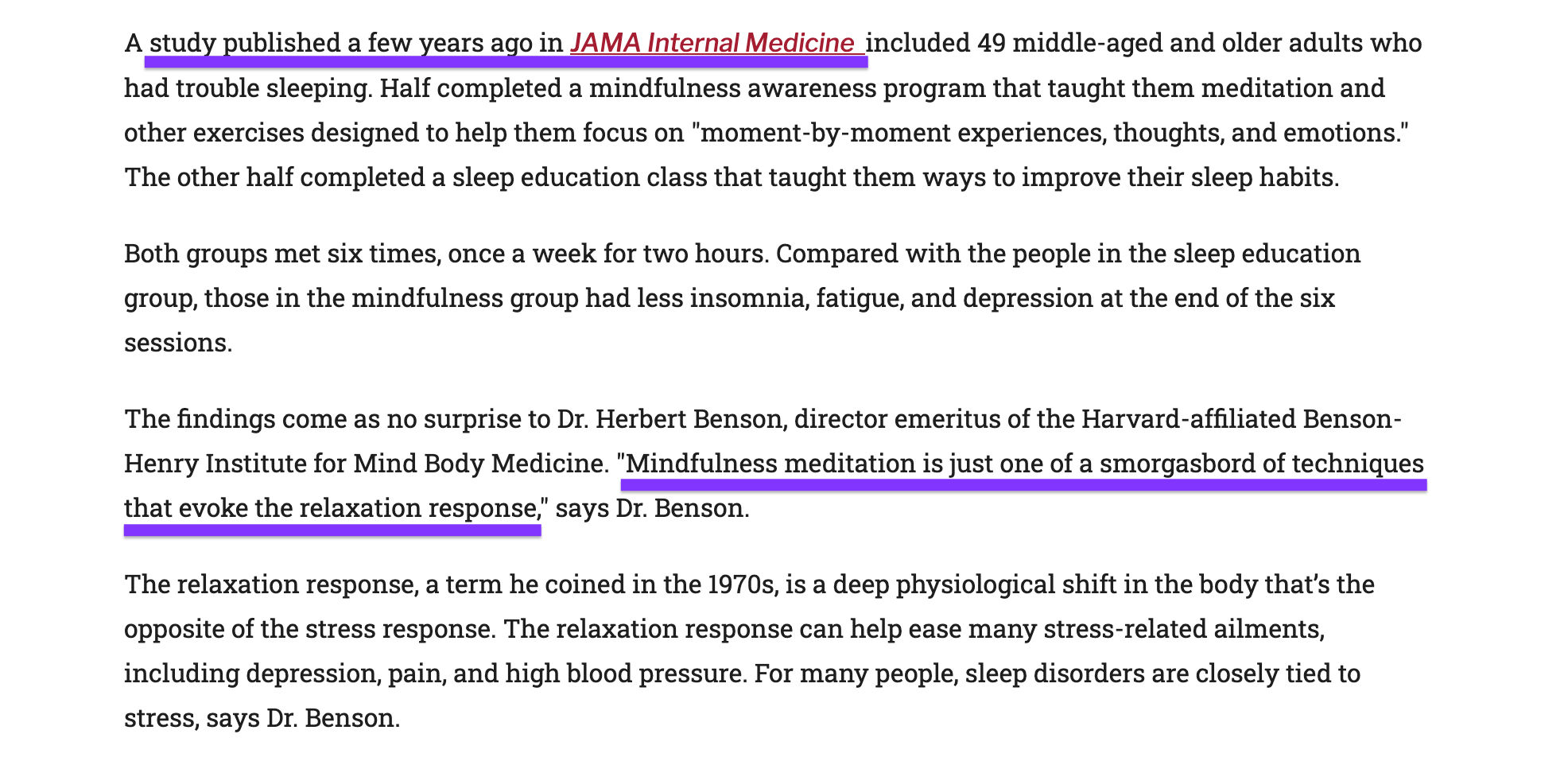
Even if you cover less sensitive topics, you should try backing your claims with reputable content like:
- Whitepapers
- Industry reports
- Expert opinions
Put yourself in the reader's shoes and ask if they might need to fact-check any claims you made. If the answer is "yes," make fact-checking easier by including the source.
8. Maintain your site's technical health
Even though we're no longer focusing on traditional search engines as much, technical optimization is still important. Make sure your website remains:
- Fast
- Mobile-friendly
- Crawlable and indexable
This is because AI algorithms have to visit plenty of pages quickly to pull content, similar to how Google's crawlers do it. The difference here is that AI models also need to create AI-generated responses in no time, so they have no time to waste.
You can use tools like Google's PageSpeed Insights to spot and fix technical errors. The metrics it covers reflect general best practices that extend beyond traditional search, so aim for optimal results.
For example, I asked ChatGPT to recommend some batteries for outdoor lighting, and the first source it cited was a listicle by Hykoont. As you can see below, the site passes Google's Core Web Vitals assessment with flying colors.

Another important aspect of technical optimization is schema markup. It helps you communicate with bots more clearly and provide more context about the elements of your pages.
Some types of structured data may be particularly important for AI-driven search engines, such as Q&A schema. As AI engines love direct questions and answers, marking them up correctly can help AI models extract content more easily.
If you've already implemented schema markup, you can use a tool like Schema Markup Validator to check for any issues. If not, there are plenty of markup generators that can help you set it up without too much hassle.
9. Monitor your GEO performance
GEO introduces a few new metrics you need to track either on top of or instead of the traditional SEO metrics. Some of the key GEO KPIs that will be important down the line include:
- AI visibility (typically measured through a specific score)
- Brand mentions (with or without citations)
- Number of citations
- Sentiment score
Many SEO tools are evolving to include GEO monitoring, and plenty of new tools are surfacing (some of which I'll share in a bit).
An AI results tracker like Surfer's can help you monitor and improve your AI visibility in generative engine results.
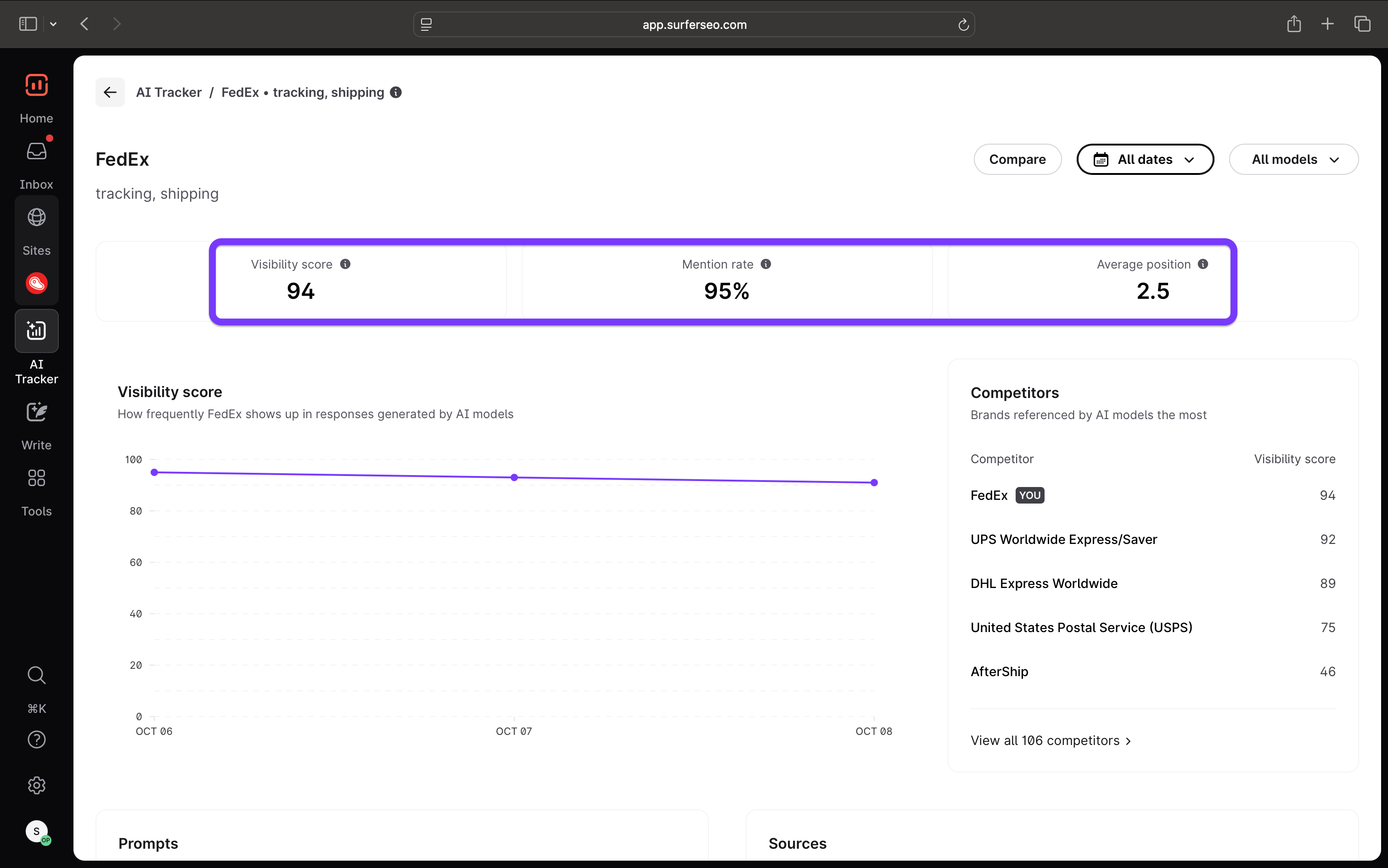
Still, perhaps the most important metric you'll want to focus on is conversions from AI responses. As traffic drops compared to traditional search engines, CTR and conversion rates will be increasingly important predictors of your site's online performance.
If you haven't already, upgrade your digital marketing toolkit to accurately assess if optimizing content for AI engines is getting results.
10. Experiment with content formats
AI search is still relatively new, so it's volatile and unpredictable in terms of what works best. Much like we change things up whenever a major Google update is released, you should do the same as AI engines evolve until you figure out how and why they're pulling certain pages over others.
As you experiment with AI search, focus on the following:
- Trying different content formats and structures (e.g., by turning a piece of your blog into an infographic or moving the "key takeaways" section from the bottom of the article to the top)
- A/B testing responses to different queries
- Using different variations of questions in headings to match the query
GEO best practices will probably change quite a bit over time, so stay on top of the most recent trends by paying attention to what the experts are saying. Try out different tips and recommendations as they surface, and you'll develop a feel for AI engines' content preferences.
5 GEO tools to try for easier optimization
To execute a data-driven GEO strategy and get cited faster, check out these tools:
1. Surfer
Surfer is a generative engine optimization platform that bridges traditional SEO with AI-driven content optimization. It helps marketers optimize for both search engines and generative AI systems in a single workflow.
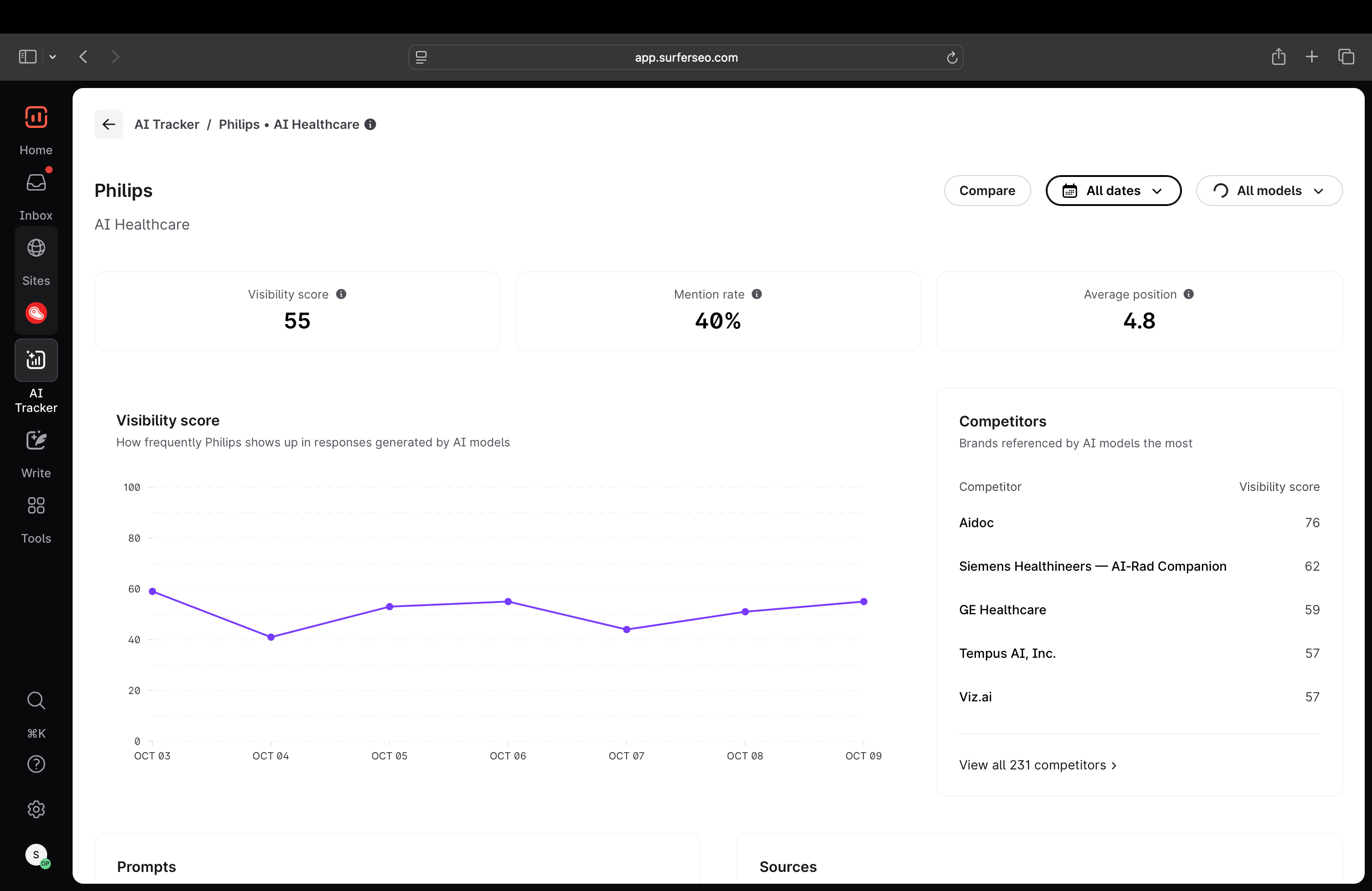
Surfer analyzes SERPs, competitor strategies, and user intent to suggest structure, keywords, and tone that align with how AI models interpret relevance.
By integrating real-time content scoring, NLP optimization, and internal linking, Surfer ensures your pages remain discoverable and contextually strong in both organic and AI-generated search results.
2. Scrunch AI
Scrunch AI is a brand monitoring and optimization platform built specifically for AI search engines like ChatGPT, Gemini, and Google AIOs. It continuously tracks how AI agents interpret and cite your brand, measuring metrics like:
- Share of voice
- Prompt-level AI visibility
- Competitor performance
The platform also highlights content gaps, outdated brand messaging, and misalignment between your desired narrative and how generative engines represent you. It then offers actionable insights to reclaim or improve your AI presence.
3. AlsoAsked
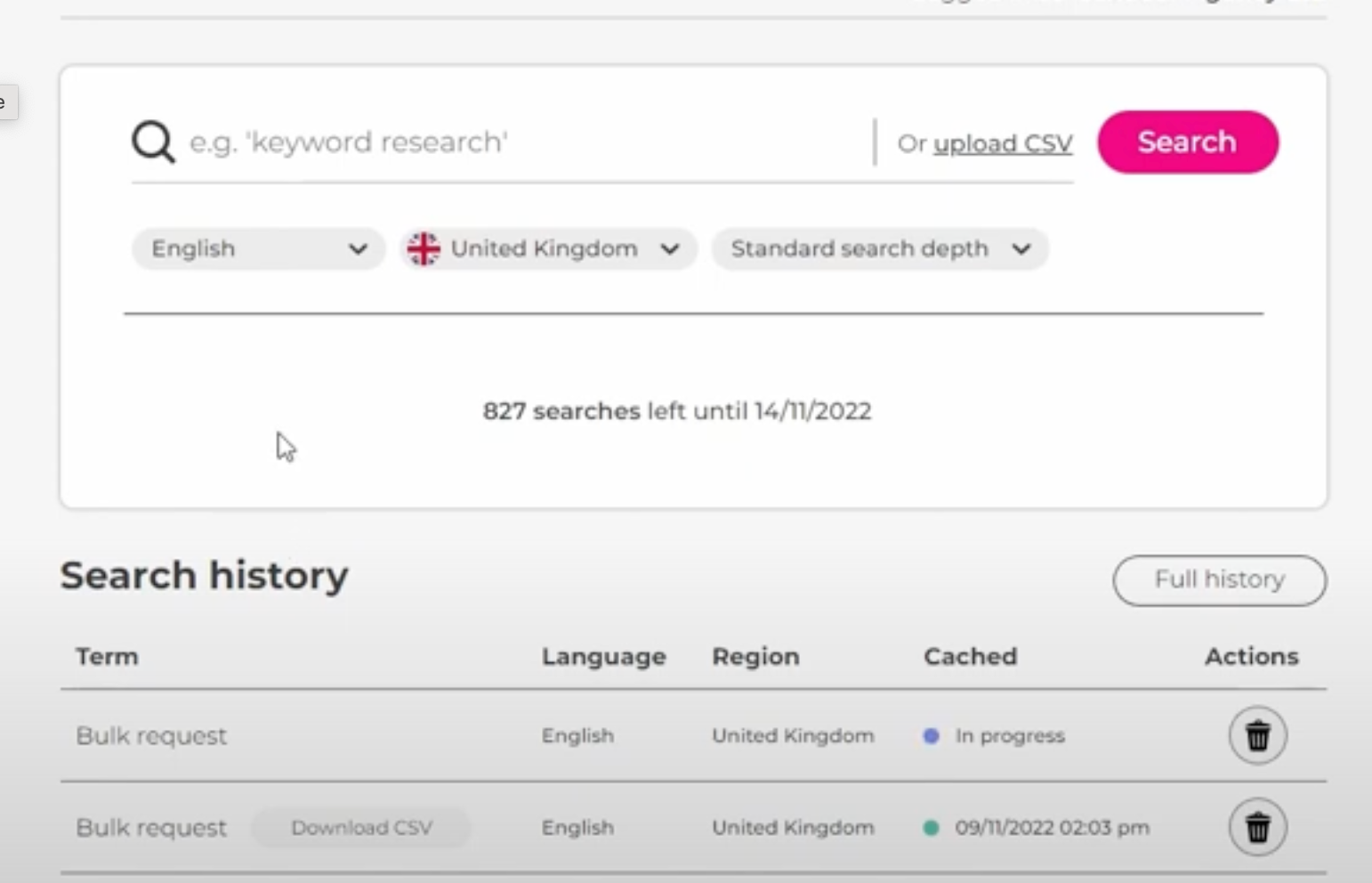
AlsoAsked maps out the “People Also Ask” (PAA) question trees directly from Google’s search results, helping you structure content to answer natural-language queries that AI engines often use for training and answer generation.
By creating content that mirrors these structures, you increase your chances of being sourced or cited by generative engines. The tool lets you explore related questions and build topical coverage that aligns with how AI clusters and interprets information.
4. Goodie AI
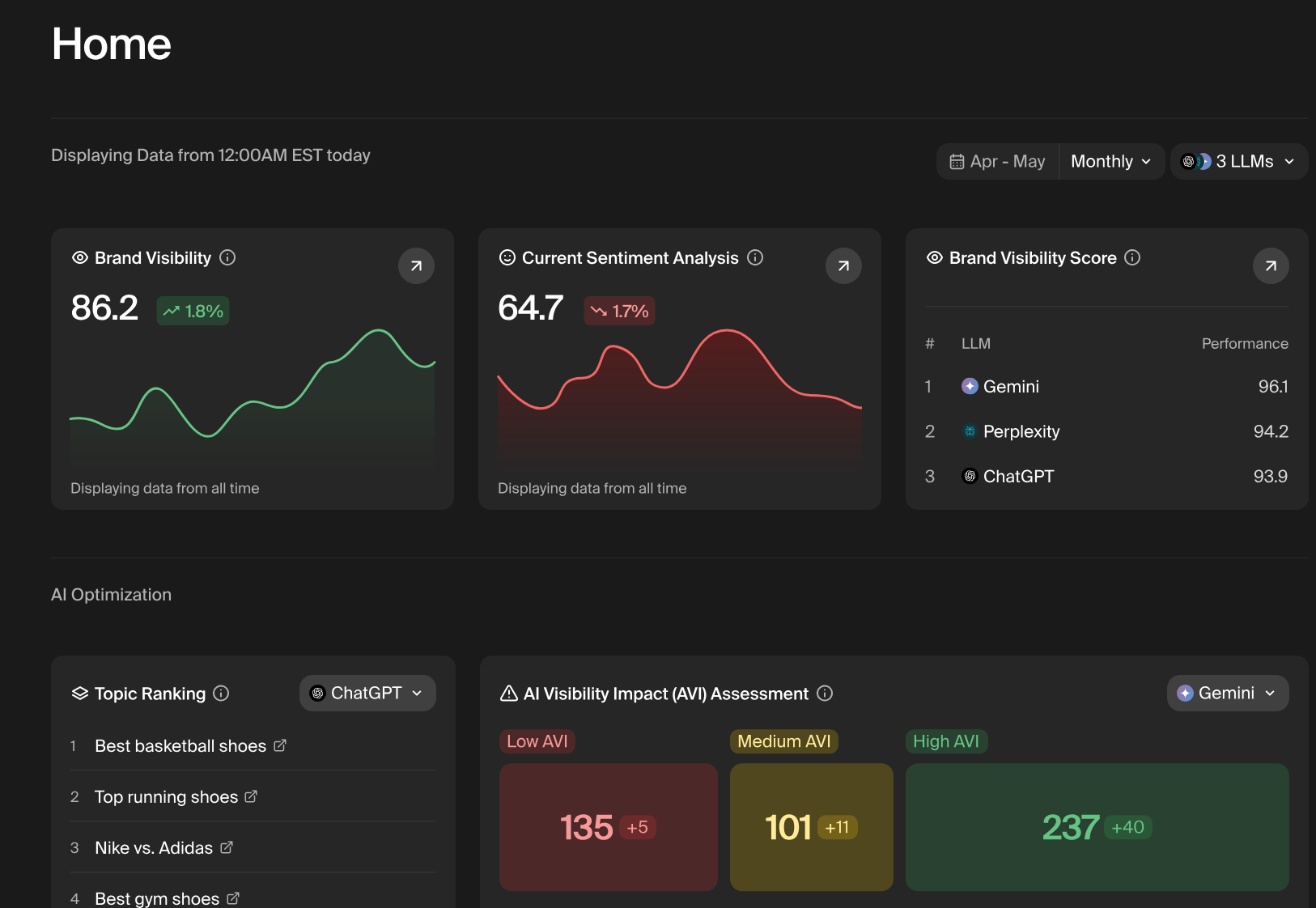
Goodie AI is a comprehensive GEO platform that lets you monitor, analyze, and optimize your presence across major AI search tools. It offers structured brand monitoring with various useful features, such as:
- Sentiment and citation tracking
- AI-powered content writing for better alignment with LLM expectations
- SKU-level tracking for product visibility in shopping prompts
Goodie connects generative impressions back to conversions, enabling attribution from AI prompts to pipeline, which makes ROI for AI citations more easily measurable.
5. SparkToro
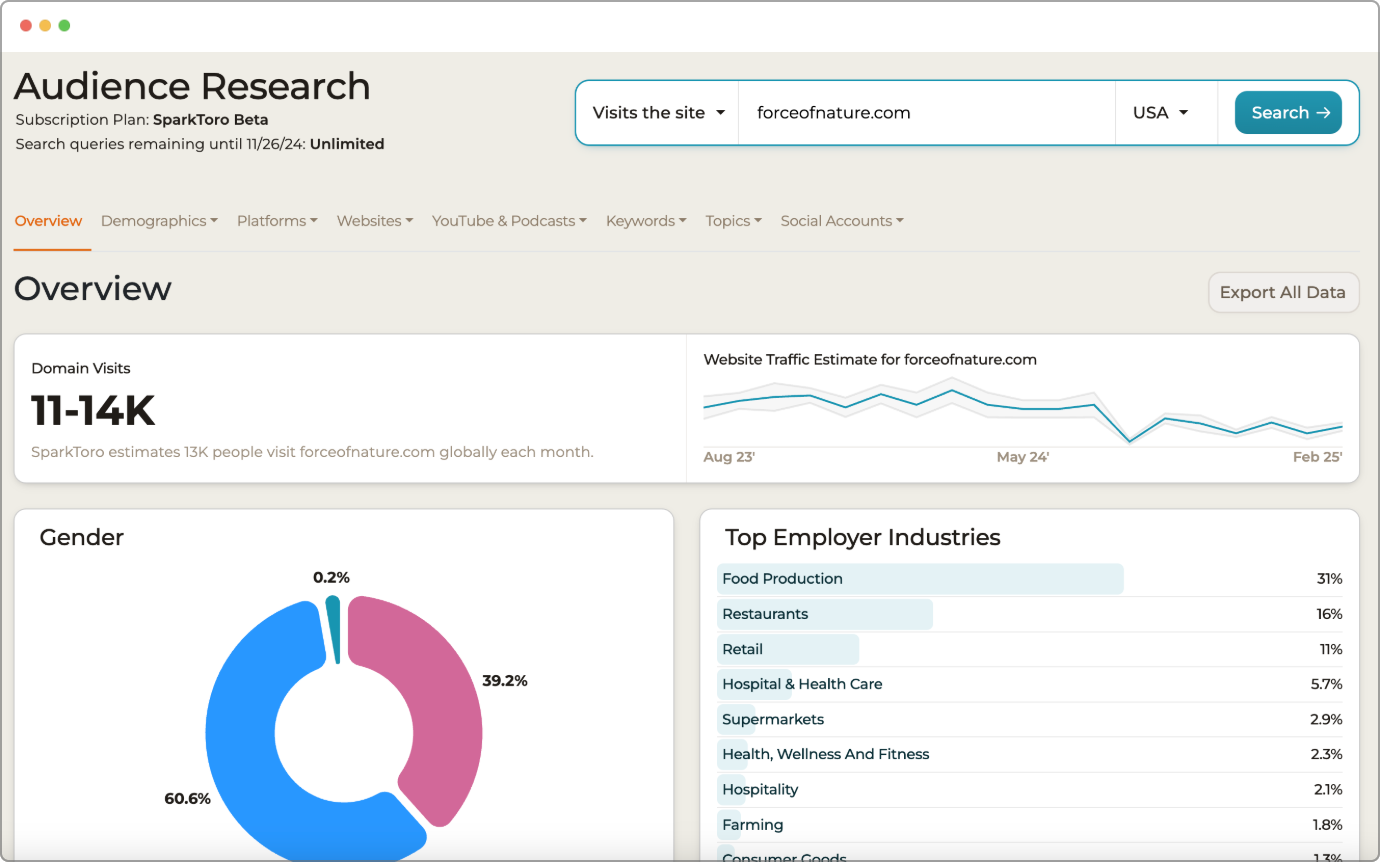
SparkToro is an audience research tool that shows where your target audience spends time online, including which websites, podcasts, and social platforms they trust. It supports GEO by helping you earn mentions and citations in authoritative places, which improves your content's chances of being seen and cited by AI models.
SparkToro’s visibility graph and audience insights can guide outreach strategies, helping you build the kind of brand presence that AI systems consider when determining credible sources.
The platform also enables a deeper understanding of your audience and their online behavior, which can be useful for identifying and answering more context-rich queries.
Key Takeaways
- Generative engine optimization (GEO) is the process of optimizing content for AI search engines. The goal is to get mentioned and/or cited by generative AI platforms as a part of their response for the relevant queries.
- Effective GEO helps you go beyond traditional optimization techniques to account for the growing adoption of AI-based engines. It can increase your brand's visibility across AI platforms and help drive highly qualified traffic.
- Unlike traditional SEO, which mainly revolves around specific search engines, GEO focuses on several major AI-powered platforms. If optimized effectively, your content can appear in AI-powered Google features like AIOs and AI Mode, as well as standalone platforms like Perplexity and ChatGPT.
- To appear in AI responses, you need to satisfy context-rich queries that go beyond generic keywords and even the typical long-tail ones. Make sure each content piece directly matches specific user intent.
- AI engines prefer direct answers to questions, so address queries in 1-2 sentences right away before moving on to the details. Structure headings as natural language queries, and use the first paragraph to answer them.
- You need to make your content easily extractable by AI engines, so structure it effectively through lists, bullet points, and the necessary visual and interactive elements that make content easier to pull.
- AI engines unify different content forms from various sources in their responses, so create multimedia content to optimize for multimodal signals and provide visual answers to queries when needed.
- Brand reputation and sentiment make or break your chances of ranking in generative AI. Manage your brand narrative by being explicit about how you help your audience solve different problems (especially when covering commercial queries).
- AI engines routinely use public communities and forums to create answers out of users' opinions, so engage with your audience across the web to stir up conversations around your brand and build a positive sentiment toward it.
- Use quotes, stats, and reputable sources to signal content quality and credibility to AI engines, especially when covering sensitive topics that can require a lot of fact-checking.
- Leverage GEO tools to monitor the performance of different tactics, and try out different content formats and structures until you figure out what works best. Stay on top of the latest GEO trends to adapt your content as the best practices evolve.





